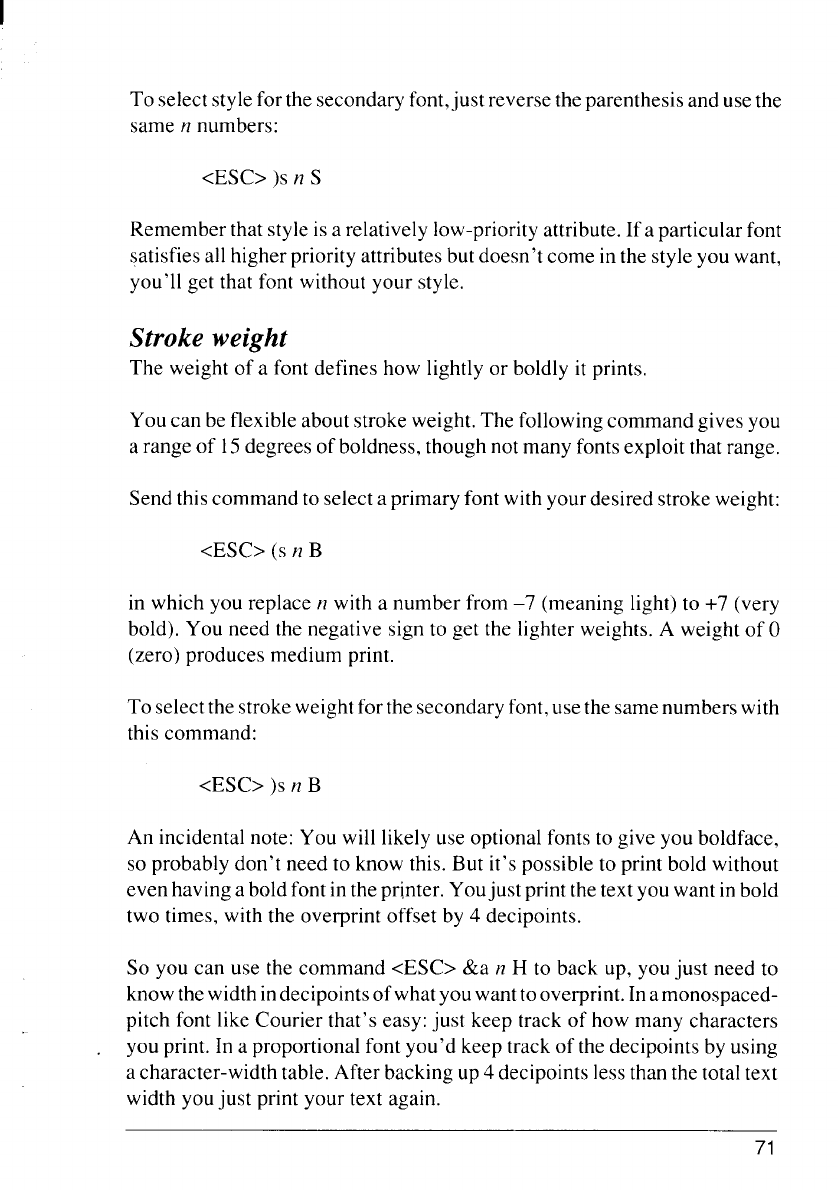
To select styleforthe secondary font,just reverse the parenthesis and usethe
same n numbers:
<ESC>
)S n S
Remember that style isa relatively low-priority attribute. If a particular font
satisfies all higher priority attributes but doesn’t come in the style you want,
you’ll get that font without your style.
Stroke weight
The weight of a font defines how lightly or boldly it prints.
You can be flexible about stroke weight. The following command gives you
a range of 15degrees of boldness, though not many fonts exploit that range.
Send thiscommand to selecta primary font with your desired strokeweight:
<ESC>
(S n B
in which you replace n with a number from –7 (meaning light) to +7 (very
bold). You need the negative sign to get the lighter weights. A weight of O
(zero) produces medium print.
To selectthe strokeweightfor the secondary font,use the samenumberswith
this command:
<ESC>
)S n B
An incidental note: You will likely use optional fonts to give you boldface,
so probably don’t need to know this. But it’s possible to print bold without
even having a bold font in the printer. Youjust print the text you want in bold
two times, with the overprint offset by 4 decipoints.
So you can use the command <ESC> &a n H to back up, you just need to
knowthewidth indecipointsofwhatyouwanttooverprint.In amonospaced-
pitch font like Courier that’s easy: just keep track of how many characters
you print. In a proportional font you’d keep track of the decipoints by using
a character-width table. After backing up 4 decipoints less than the total text
width you just print your text again.
71


















